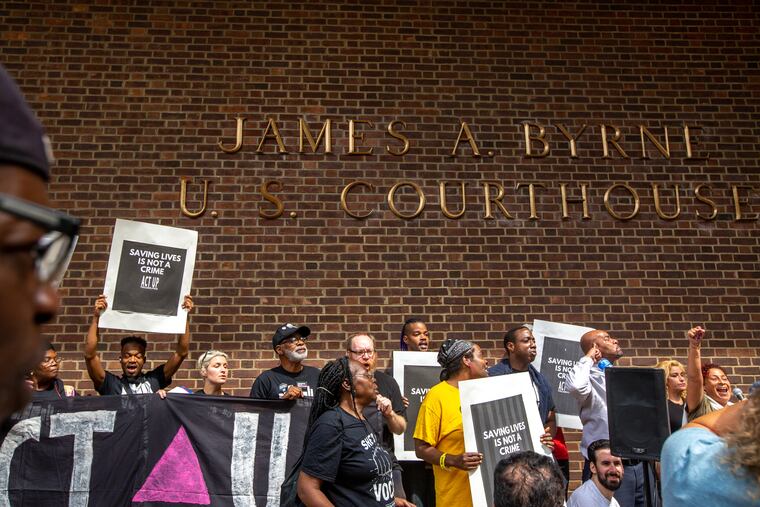Opioid crisis is still not just a ‘white’ problem | Opinion
In a racialized society, humanity is granted primarily to white people. But white people aren't the only ones suffering from drug overdose.

When I was 17, I witnessed, for the first time, another black Philadelphian using pain medication recreationally. A friend asked if I wanted to join her for pancakes and syrup at 11 p.m. Greedy for breakfast food, I promised to drive her to North Philly to pick it up. I waited in the car on Diamond Street as she went to get the pancakes — so I thought. She came back instead with a wrinkled piece of aluminum foil containing two round pills and a small container of cough syrup. While I didn’t partake, I did learn that day “pancakes and syrup” could mean barbiturates with codeine cough syrup. I would go on to encounter other black people around my age who had experience with it.
Over the last few weeks, debate has raged over Safehouse, the nonprofit trying to open a supervised injection site in Philadelphia to prevent overdose deaths from opioids. In late February, the group announced it would open a site in South Philly within a week, but canceled plans when community members pushed back.
I remember growing up amid a very different conflict around drugs in Philly. Long before opioids hit crisis point, and before Safehouse entered our city’s social and political consciousness, I lived in a Philadelphia haunted by the crack epidemic. I got an education in survival, pained addiction, and the poverty of families stifled by drugs. My family and neighbors saw close up a devastation hellbent on killing the black body, as annual homicides in the city peaked at 605 during the epidemic’s height, in 1990. Philadelphia officials admitted decades later that crack use and addiction were treated as criminal problems rather than a public health problem, the way the opioid epidemic is viewed today.
It’s in fact well-documented that the crack epidemic was not met with the same concern and humanity as the opioid crisis. Black people were criminalized for selling and using crack cocaine, often given harsher sentences than dealers who sold powdered cocaine. Many of us know the rest: Federal lawmakers intensified penalties for crime and drug use during the era, and hyper-incarceration ensued. That is a stark contrast to the many editorials, funded campaigns, and political support we see today tackling the overdoses and devastation caused by opioids, which have disproportionately affected white Americans. Can you imagine Mayor Ed Rendell backing a safe consumption site for crack in 1994? Absolutely not.
» READ MORE: Hey Mayor Kenney, you want a safer injection site? Put it in City Hall. | Jenice Armstrong
The truth is that in a racialized society, humanity is granted primarily to white people. A crisis among white people will more likely get a response from the systems that be, while black and brown people’s suffering will be seen as tertiary or dismissed wholesale. This disparity is rightfully embedded in the rage communities feel toward safe consumption sites.
But that rage ignores what I learned at age 17: Black people are using opioids too. They’re also dying from them. As The Inquirer reported in 2019, as of that year, opioid overdoses were killing more black Philadelphians than homicides.
» READ MORE: Relocation is not an option for Philly supervised injection site | Opinion
Within the communities I grew up in, I know people who will disavow anything other than completely eradicating drug use. But the reality of saving lives, for any race, is more complicated.
Our city should respond to all black death, not just wring its hands over politically expedient topics like violence without actually reducing homicides. Just as decrying gun violence in the black community without truly protecting communities isn’t working, exclaiming “no” to Safehouse does nothing to stem the thousands of overdose deaths. Safe consumption sites are a pathway to save lives. More must be done, including exploring safe consumption for other drugs, such as stimulants — like crystal meth — whose use has recently spiked in Philly and is a particular risk for LGBTQ users.
We must work to bring communities, users and nonusers alike, together to build a path forward.
Abdul Aliy-Muhammad is an organizer and writer born and raised in West Philadelphia. @MxAbdulAliy